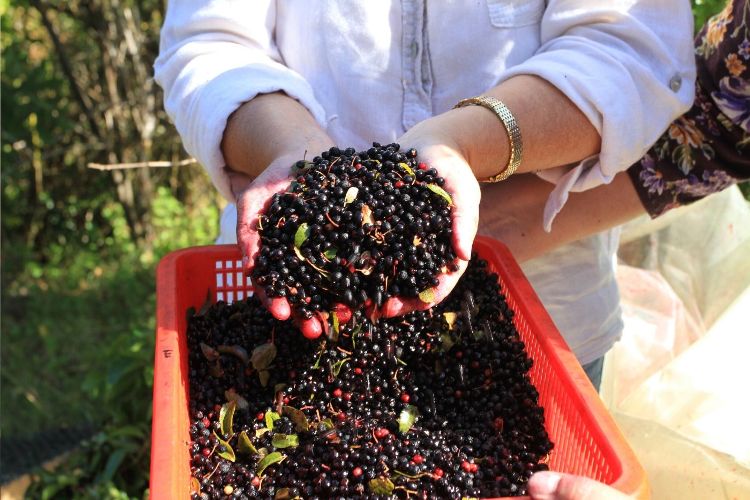
Patagonian berries. COURTESY
Patagonia is the southernmost part of the South American continent including Chile and Argentina. Berries and wild fruits have been gathered by the native Patagonians as food and medicine for over 14,000 years. The economic potential of the native berries as health promoting and relevant sources of bioactive substances has become apparent with several studies in the last decades. The use of native berries as food and medicine by the ancient hunter-gatherer societies can be traced back to the early occupation of Patagonia. The same species used in prehistoric times are still used as food by the contemporary population in this area. Chemical and bioactivity studies have reported remarkable activities in several of the native berries, including calafate (Berberis spp.), native strawberry (Fragaria chiloensis), currants (Ribes spp.), Patagonian raspberries (Rubus spp.) and maqui (Aristotelia chilensis) fruits. The increasing demand for maqui and calafate led to the selection of varieties for commercial production. The fruit constituents show strong antioxidant and inhibitory effect towards enzymes associated with metabolic syndrome, including α-amylase, α-glucosidase and lipase. Some berry constituents exert anti-inflammatory effects in vitro. The phytochemicals identified include a wide array of phenolics of different structural skeletons. Changes in composition and bioactivity after simulated gastric and intestinal digestion, as well as colonic fermentation, have been reported in some Patagonian species. Patagonian berries are a relevant source of bioactive compounds with several health promoting properties. The long tradition of use and the interest of the population for their consumption have led to the development of some of this fruits as new potential crops. The ethnobotanical evidence shows a shared knowledge among the different indigenous communities on plant uses according to the local resources, and an integration of the ancient knowledge into the contemporary society. Other species are being investigated to get a more complete picture of the food and medicinal plants from Patagonia.
This work aims to provide an insight into the ethnohistorical records of wild edible fruits from Patagonia starting with the archeobotanical studies to the contemporary use of the resources. The chemical and bioactivity studies on the native fruits are presented and discussed.
A search of electronic databases including Scopus, Scielo, Google Scholar, PubMed, ScienceDirect and SciFinder, as well as hand-search was carried out to perform an integrative review on the native Patagonian berries.






0 Comments